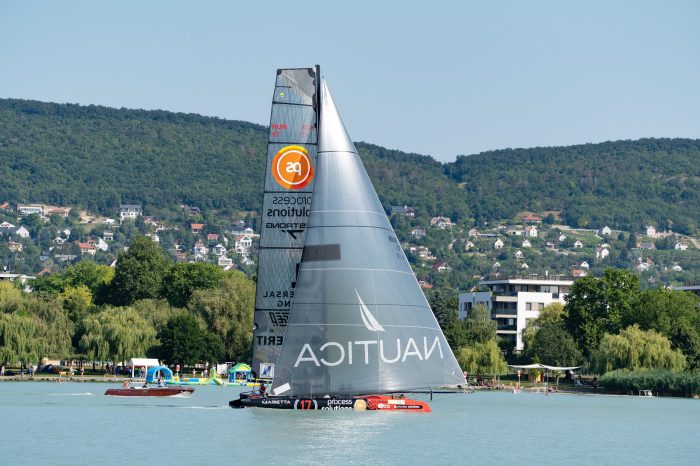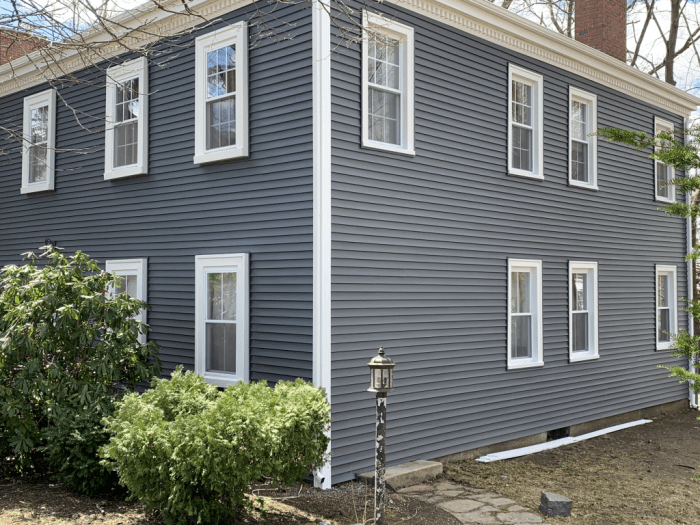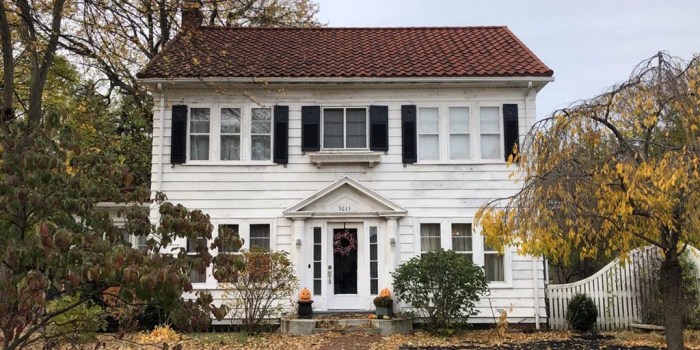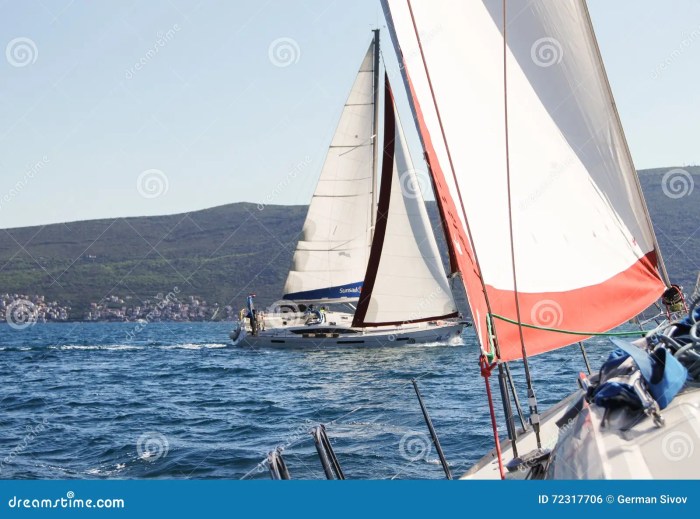Regatta Blue Siding A Comprehensive Guide

Regatta blue siding offers a stunning, versatile option for homeowners seeking a fresh, modern look. This guide dives deep into everything you need to know about this popular siding choice, from its unique color variations and durability to installation tips and long-term value. We’ll explore its material composition, compare it to other siding options, and even help you design the perfect exterior color palette to complement your new siding.
Whether you’re a seasoned DIYer or planning a professional installation, we’ll cover the essential aspects of choosing, installing, and maintaining regatta blue siding, ensuring your home looks its best for years to come. From understanding the nuances of its color in different lighting conditions to assessing its environmental impact, we aim to provide a complete and informative resource.
Regatta Blue Siding
Regatta Blue siding offers a sophisticated and timeless aesthetic for homes. Its popularity stems from its versatility and ability to complement a wide range of architectural styles and landscaping choices. This section delves into the nuances of Regatta Blue, exploring its color variations, comparisons with similar products, and its behavior under different lighting conditions. We’ll also suggest a complementary color palette for exterior home design.
Regatta Blue Siding Color Variations and Shades
Regatta Blue isn’t a single, static color. Depending on the manufacturer and specific formulation, it can range from a deep, almost navy blue to a lighter, more vibrant shade that borders on teal. Slight variations in pigment concentration and the application process can also affect the final appearance. These subtle shifts in hue are often imperceptible unless samples are placed side-by-side under controlled lighting conditions. The overall effect, however, remains consistently within the “Regatta Blue” family.
Comparison with Similar Blue Siding Colors
Many manufacturers offer similar shades of blue siding. Direct comparisons are difficult without access to physical samples, as color representation on screens can be unreliable. However, we can discuss general characteristics. Some blues may lean more towards a grayed-blue, offering a softer, less intense look than Regatta Blue. Others might be brighter and more saturated, closer to a true turquoise. The level of gloss or sheen also plays a role; a matte finish will appear different from a high-gloss finish, even if the base color is the same. Ultimately, comparing Regatta Blue to similar offerings requires a visual examination of actual siding samples under consistent lighting conditions.
Effect of Lighting on Regatta Blue Siding
Lighting significantly impacts the perceived color of Regatta Blue siding. In direct sunlight, the blue will appear more vibrant and saturated. The intensity will increase during the midday sun and diminish as the sun sets or clouds obscure the sky. In the shade, or under overcast conditions, the color will appear muted and slightly darker. This is a natural characteristic of exterior paint and siding, as light reflection and absorption are affected by environmental factors. For instance, a home facing east will experience a different range of light exposure compared to a home facing west, impacting the overall color perception throughout the day.
Complementary Color Palette for Regatta Blue Siding
A successful exterior design scheme using Regatta Blue siding hinges on thoughtful color selection for complementary elements. A palette featuring warm, earthy tones, such as beige, cream, or taupe, can create a classic and inviting aesthetic. These neutrals balance the coolness of the blue, preventing the overall look from becoming too stark or cold. Accents of white trim can add brightness and visual interest, while touches of deeper browns or even a muted reddish-brown can ground the design and add visual weight. Consider incorporating landscaping elements with foliage in shades of green, gray, or even purple for a cohesive and harmonious overall design. For example, a house with Regatta Blue siding, cream trim, and a brown roof would create a balanced and appealing look, especially when complemented by green landscaping.
Material Composition and Durability of Regatta Blue Siding

Source: Hungary today. hu
Regatta Blue siding, like many modern siding options, is engineered for both aesthetics and longevity. Understanding its composition and inherent durability is key to making an informed decision for your home’s exterior. This section will delve into the specifics of its material makeup and how it stands up to the test of time and the elements.
Regatta Blue siding typically consists of a high-density polymer composite material. This isn’t simply plastic; it’s a carefully formulated blend of polymers designed for strength, weather resistance, and color retention. The exact recipe varies by manufacturer, but common components include polyvinyl chloride (PVC), modified acrylic polymers, and UV stabilizers. These components work together to create a siding that’s both robust and visually appealing.
Weather Resistance of Regatta Blue Siding
Regatta Blue siding is engineered to withstand a wide range of weather conditions. Its polymer composition offers excellent resistance to fading from prolonged sun exposure thanks to the inclusion of UV stabilizers. The dense material is also highly resistant to moisture damage from rain and snow, preventing issues like rot, warping, and swelling that can plague wood siding. Proper installation, ensuring adequate ventilation and sealing around windows and doors, further enhances this weather protection. The siding’s smooth surface also helps shed water efficiently, minimizing the risk of water accumulation.
Durability Comparison with Other Siding Materials
Compared to other siding materials, Regatta Blue siding holds its own. While wood siding offers a natural aesthetic, it requires significant maintenance and is susceptible to rot, insect infestation, and damage from extreme weather. Vinyl siding is generally more affordable but can be less durable, and prone to cracking and fading over time, especially under harsh sunlight. Fiber cement siding is known for its durability and fire resistance but can be more expensive and heavier than Regatta Blue. Regatta Blue siding offers a good balance of durability, aesthetics, and cost-effectiveness, sitting comfortably between vinyl and fiber cement in terms of longevity and maintenance requirements.
Maintenance Procedures for Regatta Blue Siding
Regular maintenance is crucial to preserving the appearance and longevity of your Regatta Blue siding. While it’s low-maintenance compared to other options, neglecting it can lead to premature wear and tear. A simple cleaning and occasional inspection can go a long way.
| Task | Frequency | Method | Notes |
|---|---|---|---|
| Cleaning | Annually or as needed | Hose down with water; use mild soap and a soft brush for stubborn stains. | Avoid harsh chemicals or abrasive cleaners. |
| Inspection | Semi-annually | Visually inspect for any damage, loose panels, or signs of wear. | Address any issues promptly to prevent further damage. |
| Caulk Repair | As needed | Replace any cracked or missing caulk around windows and doors. | Use high-quality, exterior-grade caulk. |
| Panel Replacement | As needed | Replace any damaged or severely deteriorated panels. | Consult the manufacturer’s instructions for proper replacement techniques. |
Installation and Application of Regatta Blue Siding
Installing Regatta Blue siding can significantly enhance your home’s curb appeal and protect it from the elements. This process, while achievable for DIY enthusiasts, often benefits from professional expertise, especially for larger projects or complex house designs. Proper installation ensures longevity and prevents future issues.
Successful Regatta Blue siding installation hinges on careful preparation and precise execution. Understanding the specific requirements of your home’s structure and the siding material itself is crucial. This section provides a step-by-step guide, addressing common challenges and outlining necessary tools and materials.
Tools and Materials Required for Regatta Blue Siding Installation
A successful Regatta Blue siding installation requires the right tools and materials. Having everything prepared beforehand significantly streamlines the process and minimizes potential delays. Improper tools can lead to damage to the siding or the underlying structure.
Essential tools include a measuring tape, level, circular saw, utility knife, hammer, nail gun (preferably a pneumatic one for efficiency), safety glasses, work gloves, and a ladder. Materials needed are Regatta Blue siding panels, appropriate fasteners (nails or screws), starter strips, J channels, corner trim, and flashing (where necessary). You may also need caulking, wood furring strips (for uneven walls), and underlayment (depending on the existing wall condition).
Step-by-Step Installation Guide for Regatta Blue Siding
The following steps Artikel a typical Regatta Blue siding installation. Remember to always consult the manufacturer’s instructions for specific details and recommendations, as they may vary depending on the siding profile and your specific needs.
- Preparation: Thoroughly inspect the existing wall for any damage, rot, or unevenness. Repair any issues before proceeding. Ensure the wall is clean and dry.
- Framing and Sheathing: If necessary, install appropriate framing and sheathing to create a smooth, level surface for the siding. This step is crucial for a professional finish.
- Installation of Starter Strips: Begin by installing starter strips along the bottom edge of the wall. These provide a level base for the first row of siding.
- First Row Installation: Install the first row of siding panels, ensuring proper alignment and overlap. Use appropriate fasteners to secure the panels.
- Subsequent Rows: Continue installing subsequent rows, ensuring proper overlap and alignment with the previous rows. Maintain consistent spacing between panels.
- Corner and J-Channel Installation: Use J-channels and corner trim to neatly finish corners and edges. Ensure proper sealing to prevent water penetration.
- Flashing: Install flashing around windows and doors to prevent water damage. This is a critical step for waterproofing.
- Final Inspection: Once the installation is complete, perform a thorough inspection to ensure proper alignment, overlap, and sealing. Address any imperfections immediately.
Common Installation Challenges and Solutions for Regatta Blue Siding
Certain challenges may arise during Regatta Blue siding installation. Understanding these beforehand allows for proactive measures and prevents costly mistakes.
Uneven walls are a common issue. Using wood furring strips can create a level surface for the siding. Another challenge is cutting panels to fit around windows and doors; precise measurements and careful cutting are crucial to avoid gaps or misalignments. Finally, ensuring proper overlap and sealing prevents water damage. Regular inspection during installation helps identify and address these challenges promptly.
Aesthetic Considerations and Design Applications of Regatta Blue Siding

Source: newpro.com
Regatta Blue siding, with its rich, deep hue, offers a unique aesthetic that can significantly impact a home’s overall appearance. Its versatility allows for integration into a variety of architectural styles, creating both classic and contemporary looks. Understanding how to best utilize this color and its potential pairings is key to achieving a visually appealing and cohesive exterior design.
Regatta Blue siding is surprisingly adaptable. Its deep blue tone works well in both formal and informal settings, complementing various architectural styles and landscaping designs. The color’s intensity can be balanced effectively with a careful selection of trim, roof, and landscaping elements.
Suitability of Regatta Blue Siding for Different Home Styles
Regatta Blue siding can enhance the aesthetic appeal of various home styles. For example, its sophisticated tone complements traditional homes, adding a touch of timeless elegance. On more modern homes, it provides a striking contrast, lending a bold and contemporary feel. Coastal homes benefit from the color’s association with the sea, creating a seamless transition between the house and its surroundings. Even farmhouse styles can incorporate Regatta Blue effectively, offering a unique twist on a classic design. The key is to consider the overall style and desired mood when incorporating this distinctive siding.
Examples of Exterior Designs Featuring Regatta Blue Siding
The following table illustrates how Regatta Blue siding can be used in various design schemes, highlighting the importance of color coordination to achieve a balanced and visually pleasing result.
| Siding | Trim | Roof | Landscaping |
|---|---|---|---|
| Regatta Blue vinyl siding | Off-white or creamy white vinyl trim, providing a crisp contrast against the deep blue. | Gray asphalt shingles offer a neutral backdrop that complements both the siding and trim. | Lush green lawn with mature trees and shrubs, creating a natural contrast and visual balance. Consider adding pops of color with flowering plants in shades of white, purple, or yellow. |
| Regatta Blue fiber cement siding | Dark charcoal gray trim, creating a more dramatic and modern look. | Dark gray or black metal roofing enhances the contemporary feel and provides a sophisticated contrast. | Low-maintenance landscaping with gravel, succulents, and drought-tolerant plants, mirroring the clean lines of the home’s design. |
| Regatta Blue wood siding (painted) | White wood trim accentuates the classic charm of the wood siding and provides a traditional look. | Dark brown wood shake shingles, add warmth and texture to the design. | Vibrant flowerbeds with a mix of colors, such as red, pink, and orange, create a lively contrast against the Regatta Blue. |
| Regatta Blue engineered wood siding. | Light gray stone or stucco trim, creating a textural contrast and a more rustic feel. | Terracotta clay tiles, add warmth and a Mediterranean flair to the overall design. | Mediterranean-style landscaping with olive trees, lavender, and other drought-tolerant plants. |
Balancing Regatta Blue Siding with Other Colors
Successfully incorporating Regatta Blue siding requires careful consideration of color balance. The key is to create a harmonious blend of colors that avoids visual clashing. Using a lighter color for trim, such as off-white, creamy white, or light gray, helps to break up the intensity of the Regatta Blue and prevent the house from feeling too dark or overwhelming. Roof color should complement both the siding and trim, often opting for neutral shades like gray, brown, or dark green. Landscaping provides the opportunity to introduce pops of color that complement the overall scheme without competing with the Regatta Blue siding. For instance, brighter accent colors in landscaping should be used sparingly to prevent visual overload. Consider the surrounding environment when selecting colors; for example, a home near a body of water might benefit from colors that echo the natural surroundings. Remember, a well-balanced design uses color to create visual interest and harmony, not discord.
Cost and Value Considerations of Regatta Blue Siding

Source: wixstatic.com
Choosing exterior siding involves careful consideration of both upfront costs and long-term value. Regatta Blue siding, while offering a beautiful aesthetic and durable performance, necessitates a thorough understanding of its pricing structure and the return on investment it promises. This section will break down the factors influencing the cost of Regatta Blue siding installation and analyze its long-term value proposition.
Factors influencing the cost of Regatta Blue siding installation are multifaceted. The initial price depends heavily on the quantity of siding needed, which is directly related to the size of the house or structure being sided. Labor costs, always a significant component, vary depending on the region, contractor experience, and complexity of the installation (e.g., intricate architectural details require more time and expertise). The cost of materials, including the siding itself, underlayment, trim, and fasteners, also fluctuates based on market conditions and supplier pricing. Finally, any necessary preparatory work, such as removing old siding or repairing underlying structural issues, will add to the overall expense.
Initial Cost versus Long-Term Value
While the initial investment in Regatta Blue siding might seem substantial compared to cheaper alternatives, its long-term value proposition often outweighs the higher upfront cost. Regatta Blue siding’s superior durability translates to reduced maintenance and repair expenses over its lifespan. Unlike some less resilient materials that require frequent repainting or replacement, Regatta Blue siding can maintain its appearance and structural integrity for many years, minimizing long-term upkeep costs. This longevity contributes to significant cost savings over the lifetime of the home. For example, a homeowner might spend more initially on Regatta Blue but avoid the cost of repainting every 5-7 years, which is common with other siding types. The long-term savings accumulate over time, making the higher initial cost a worthwhile investment.
Return on Investment (ROI) of Regatta Blue Siding
The return on investment (ROI) for Regatta Blue siding is difficult to quantify precisely, as it depends on various factors, including the specific installation costs, property value appreciation, and the siding’s lifespan. However, a strong argument for a positive ROI can be made based on its durability and aesthetic appeal. A well-maintained home with attractive siding is generally more valuable than a comparable home with damaged or outdated siding. This increased value, potentially realized when selling the property, offsets the initial investment. Additionally, the reduced maintenance costs associated with Regatta Blue siding contribute to a higher ROI compared to siding materials that require frequent repairs or replacements. In essence, the long-term cost savings and potential increase in property value create a strong case for a positive return on investment.
Impact of Material Choices on Overall Cost
The specific type and quality of Regatta Blue siding chosen significantly influence the overall project cost. Higher-end options, featuring enhanced durability or unique finishes, command a higher price than standard grades. Similarly, choices regarding trim, flashing, and underlayment materials also affect the final cost. Opting for premium-grade materials generally leads to higher upfront costs but can contribute to longer-term durability and lower maintenance expenses. Conversely, choosing more economical options might reduce the initial investment but could necessitate more frequent repairs or replacements down the line, potentially negating the initial cost savings. Careful consideration of these trade-offs is crucial in balancing initial cost and long-term value.
Environmental Impact and Sustainability of Regatta Blue Siding
Choosing sustainable building materials is increasingly important for minimizing our environmental footprint. This section examines the environmental impact of Regatta Blue siding throughout its lifecycle, from manufacturing to disposal, and compares it to other common siding options. We’ll also explore the use of sustainable materials in its production.
Regatta Blue Siding’s environmental impact is multifaceted, stemming primarily from its manufacturing process and the sourcing of raw materials. The energy consumed in the production of the siding’s components, the emission of greenhouse gases during manufacturing, and the generation of waste materials all contribute to its overall environmental footprint. The type of raw materials used, their origin, and the manufacturing techniques employed significantly influence the intensity of these impacts. For instance, the use of recycled content in the production process can significantly reduce the overall environmental burden.
Manufacturing Process Emissions
The manufacturing process of Regatta Blue siding, like many other building materials, involves several stages that generate emissions. These emissions include greenhouse gases such as carbon dioxide (CO2), methane (CH4), and nitrous oxide (N2O), which contribute to climate change. The specific levels of emissions depend on factors such as the energy source used in the manufacturing process (e.g., fossil fuels versus renewable energy), the efficiency of the manufacturing equipment, and the transportation of raw materials and finished products. Companies committed to sustainability often invest in energy-efficient technologies and renewable energy sources to mitigate these emissions. For example, a manufacturer might utilize solar power to reduce their reliance on fossil fuels. This commitment to responsible manufacturing directly impacts the overall environmental impact of the product.
Recyclability and End-of-Life Disposal
The recyclability of Regatta Blue siding is a crucial aspect of its sustainability. Depending on the specific composition of the siding, it may be possible to recycle certain components at the end of its lifespan. However, the feasibility of recycling often depends on the availability of appropriate recycling facilities and the willingness of consumers and contractors to participate in recycling programs. If recycling isn’t feasible, responsible disposal methods, such as sending the material to a landfill, should be considered. The environmental impact of landfilling is less severe if the siding material doesn’t contain harmful substances that could leach into the surrounding environment. Therefore, manufacturers should focus on using materials that are less harmful to the environment even if landfilling becomes necessary.
Comparison to Other Siding Materials, Regatta blue siding
Comparing the environmental footprint of Regatta Blue siding to other siding materials, such as wood, vinyl, and fiber cement, requires a comprehensive life cycle assessment (LCA). An LCA analyzes the environmental impacts associated with each stage of a product’s life, from raw material extraction to disposal. Such studies can provide a clearer picture of the relative environmental benefits and drawbacks of different siding options. For instance, wood siding may have lower embodied carbon if sourced sustainably, while vinyl siding might have lower maintenance costs but higher embodied carbon and limited recyclability. A comprehensive LCA allows for informed comparisons and choices among various materials.
Sustainable Materials in Production
The use of sustainable materials in the production of Regatta Blue siding directly contributes to its overall environmental performance. The incorporation of recycled content, such as recycled plastics or wood fibers, can reduce the demand for virgin materials and minimize the environmental impact of raw material extraction. Furthermore, the use of sustainably sourced materials, certified by organizations like the Forest Stewardship Council (FSC), ensures that the materials are harvested responsibly, minimizing deforestation and habitat loss. The use of low-VOC (volatile organic compound) paints and coatings further reduces the emission of harmful air pollutants during and after installation. The incorporation of these elements reduces the overall environmental footprint of the product.
Closing Notes

Source: dreamstime.com
Ultimately, choosing regatta blue siding is about more than just aesthetics; it’s an investment in your home’s beauty, durability, and value. This guide has equipped you with the knowledge to make an informed decision, understand the installation process, and plan for long-term maintenance. By considering the factors discussed—from color variations and material composition to cost and environmental impact—you can confidently embark on your home improvement project and enjoy stunning results for years to come. Remember to always consult with professionals for complex installations or if you have any uncertainties.
FAQ Overview
What are the most common maintenance tasks for regatta blue siding?
Regularly washing the siding with a gentle detergent and water helps remove dirt and debris. Inspect for any damage and promptly address issues like cracks or loose panels.
Is regatta blue siding suitable for all climates?
Its weather resistance is generally good, but specific performance depends on the material composition (e.g., vinyl, fiber cement). Check manufacturer specifications for your region’s climate conditions.
How long does regatta blue siding typically last?
Lifespan varies greatly depending on the material and proper maintenance. High-quality siding can last 20-50 years or more.
Can I paint the regatta blue siding a different color?
This depends on the siding material. Some materials are paintable, while others aren’t. Check the manufacturer’s recommendations before attempting to paint.
Where can I find a certified installer for regatta blue siding?
Contact the siding manufacturer directly, or search online for local contractors specializing in siding installation. Always check reviews and obtain multiple quotes.
Comments are closed.